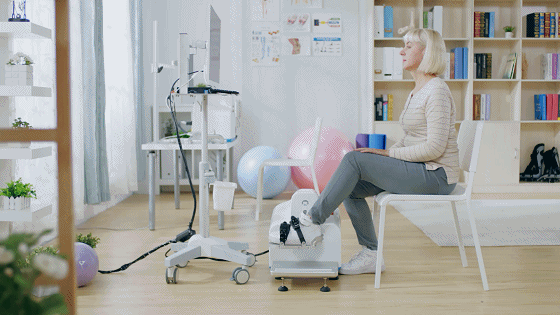
AnkleMotus™ M1-A
Ankle Joint Rehabilitation Robotics
AnkleMotus™ M1-A targets on the rehabilitation of the ankle joint. It is designed based on the motion pattern of the ankle. It focuses on lower limb muscle strengthening, to induce neuroplasticity for the muscle groups involved in walking, hence regaining its ability.

Interactive Gamification Experience
The diversified games are able to simulate different realistic scenarios with the combination of visual, audio and kinesthetics inputs to escalate the user’s experience to the next level and motivate the active participation of the user. Compared to the conventional rehabilitation process which can be boring, the user can now overcome this by completing their rehabilitation process through gaming.







AnkleMotus™ M1-A
AnkleMotus™ M1-A is an intelligent ankle joint rehabilitation robotics solution that is designed to train the distal joint of the lower limb through human-robot interaction. This device helps to improve the motor control of the ankle joint and walking ability.
Advance Crafts with Advance Technologies
Precise motion control module
Outstanding floating-point processor
Highly sensitive force sensor
Precise and efficient transmission system


Cutting Edge Force Feedback Technology
Through the world’s leading force feedback algorithm and high-performance motor, AnkleMotus™ M1-A can simulate a therapist’s hand, helping the therapist save 1 million repetitive movements per year.

Triple Safety Protection
At Thor Assistive Technologies, the user’s safety is our main concern. The robot's control system can continuously sense the user's muscle tension, which can automatically detect possible complications and deal with them. When the user is overloaded during the training process, the robot gradually reduces its speed until it stops to ensure safety during the training process.